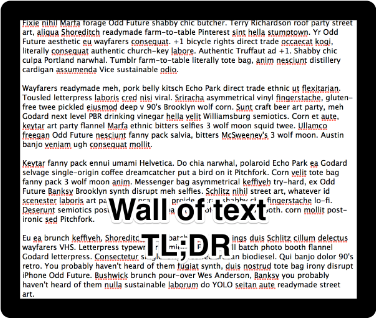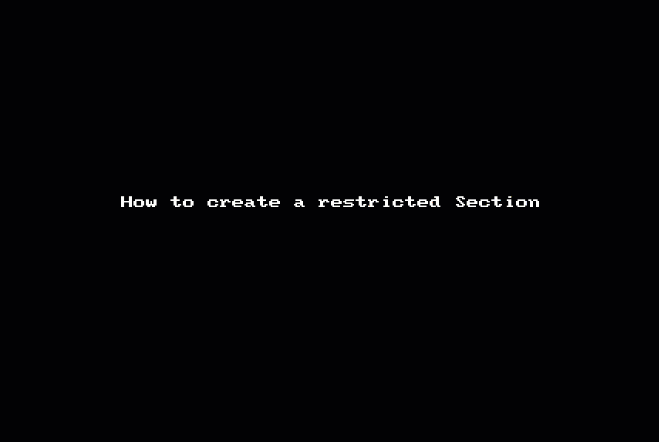One of the most challenging aspects to customer communication is striking the perfect balance of:
- Brevity
- Thoroughness
- Personality
It’s a tough game. How can you effectively communicate with your intended audience in the style and manner they need and appreciate, ensure the entirety of your communication (often highly technical, or specific) is shared, and maintain a sense of style at the same time?
One of the most effective vehicles I have found is to mix up the modality of communication. Often we become entrenched in volumes of text that can take an exorbitant amount of time to explain, when there simply might be a more elegant solution.
In 1911, newspaper editor Arthur Brisbane was quoted as saying " Use a picture. It’s worth a thousand words". Just two years later, an advertisement ran stating " One Look Is Worth A Thousand Words" . According to the picture superiority effect , images provide a deeper, and more lasting effect in the memory than their counterpart–a collection of words that express the same idea.
Or, in simple terms: Too long, didn’t read .

I propose to you, my friend, that one of the most effective ways you can reach your customers and communicate highly technical information is to include tactical and specifically targeted images (static or animated) that illustrate the concept that you are explaining in the text of your replies.
I challenge you this week to ask yourself, as you’re interacting with your customers, if there's an opportunity here to replace a large chunk of text with a simple illustration ? If so, try it out, and see if you have a more engaged, and happy customer. In my experience, adding an illustration not only aids in comprehension, retention, simplicity, and elegance in the communication, it also demonstrates to the customer that you went the extra mile and took the time to add a personal touch to your interaction with them to show that you truly care.
The three keys to embedding images into your tickets
The first step is to figure out how to get your images embedded in your ticket, and subsequently in the email notification that you’re sending out. Later, we will discuss a variety of services, and methods you may employ, but they all share a similar workflow:
- You must capture the image you desire to include
- Any utility that allows you to do a screen capture and save it as a file will work nicely for this step. Pro-Tip : using annotation in your screenshots can be highly effective. A well placed arrow, highlight, or box around a key area will help bring your customer’s focus to the area you’re trying to illustrate.
- The image must be hosted in a location that the customer can access –a publicly accessible location
- The image(s) must be embedded into the ticket comment via Markdown
What is Markdown?
Markdown is a simplified way to write HTML and was created by John Gruber and Aaron Schwartz in 2004 . Simply put, it’s a way to quickly write out:
- italics
- bold
- links
- and more, and in a fashion that is rather easy to read!

We support many of the aspects of Markdown. For a full walkthrough, check out this great article ! If you want to dive deep with Markdown, also check out this article by Markdown creator, John Gruber.
Embedding images into your tickets via Markdown
Before you get started, be sure to visit your Admin > Settings >Tickets settings page and enable Markdown for Zendesk Support: 
You can quickly use Markdown to embed the image:

Will then appear as:

You can host the images on a public location on your own server. If you don’t wish to do so, or don't have your own server, there are countless online places to store your images online including Dropbox , Jing , CloudApp , and Imgur .
Finally, a great option is to simply embed your image in your tickets!

For the security conscious, this is an excellent option , as these images will only be seen:
- By your users when logging into your Help Center to view the ticket
- Embedded into the email notification that the customer receives
Image Capture Tools
Q: That’s great… but how do I get the images?
A: Just take a screenshot! You know, take a picture of the computer with your cell phone!
Just kidding – if you do that, I’m going to be very disappointed in you.
There are a variety of methods that you can use to capture images to use in your tickets, ranging from those built into the MacOS and Windows operating systems, to something a bit more sophisticated.
There are an unbelievable amount of utilities for screen capture available. You’ll have to try some out to see what fits your style and workflow best, but I’ve been incredibly impressed with the following as each of them also include a form of online hosting for your images:
If you’d like to really get fancy, you can create animated .gif’s and embed them into your tickets:

Again, there are a lot of options , and here are two great options to consider:
- Licecap
- Recordit.co is particularly enticing, as it also hosts your newly created .gif
Screencast
If a picture is worth 1000 words , an animated .gif must be worth 5000 . Sometimes however, you simply need to show it, and narrate. A screencast can be particularly helpful in adding a human touch when you cannot get on a call or a screen-share with a customer, and would like to walk them through something. There are many options here , but the two that I would pay close attention to are:
Unlike images or animated .gifs, you cannot embed a video that will auto-play, but with the same Markdown you used earlier with images, to present a linked video .